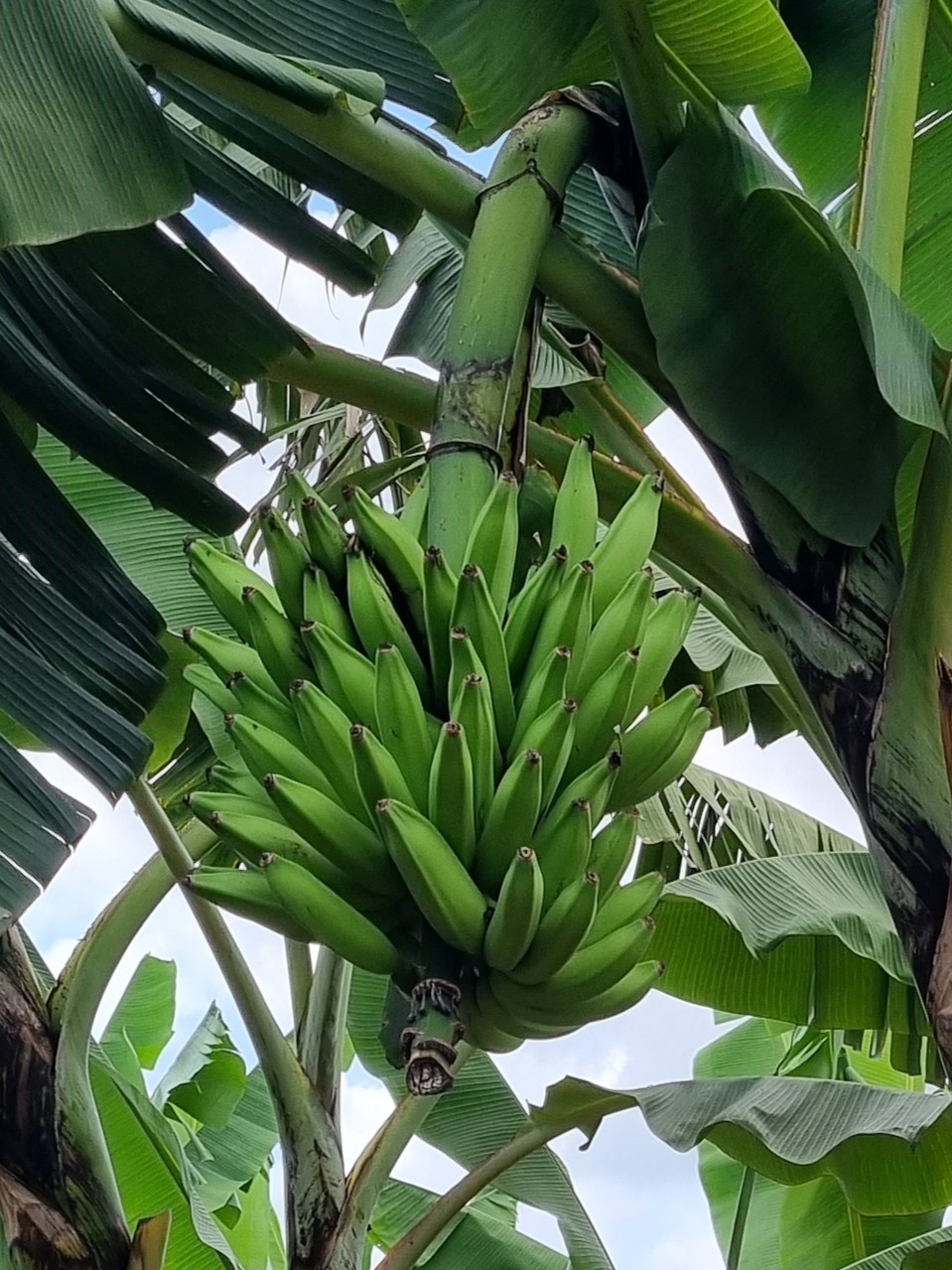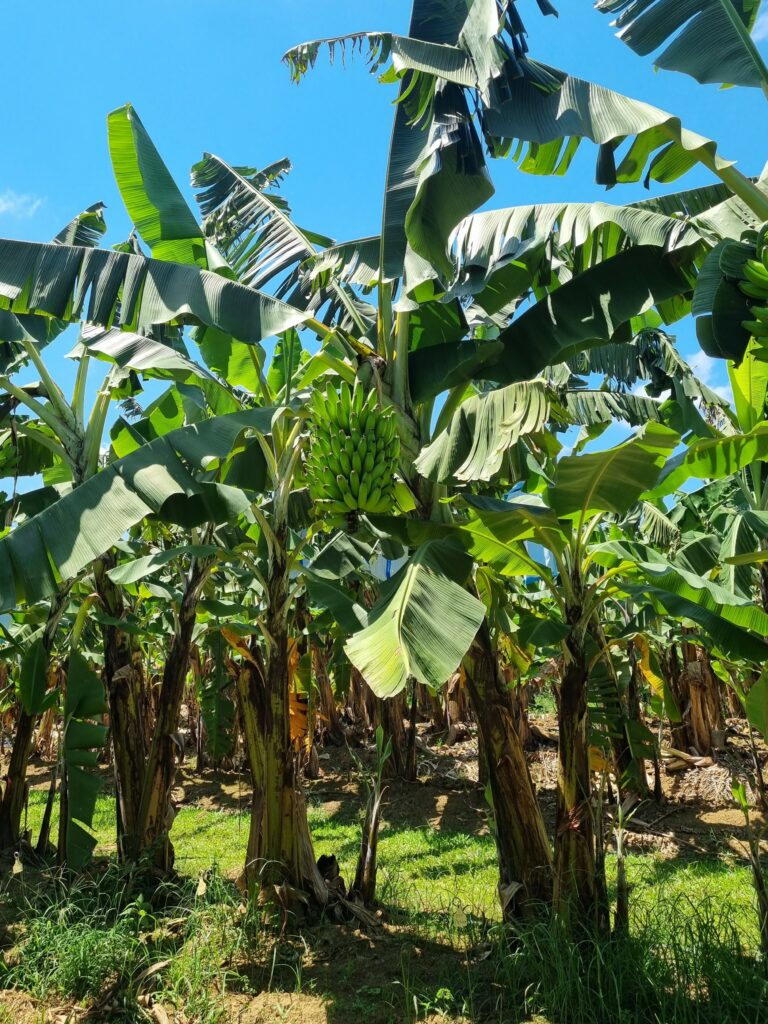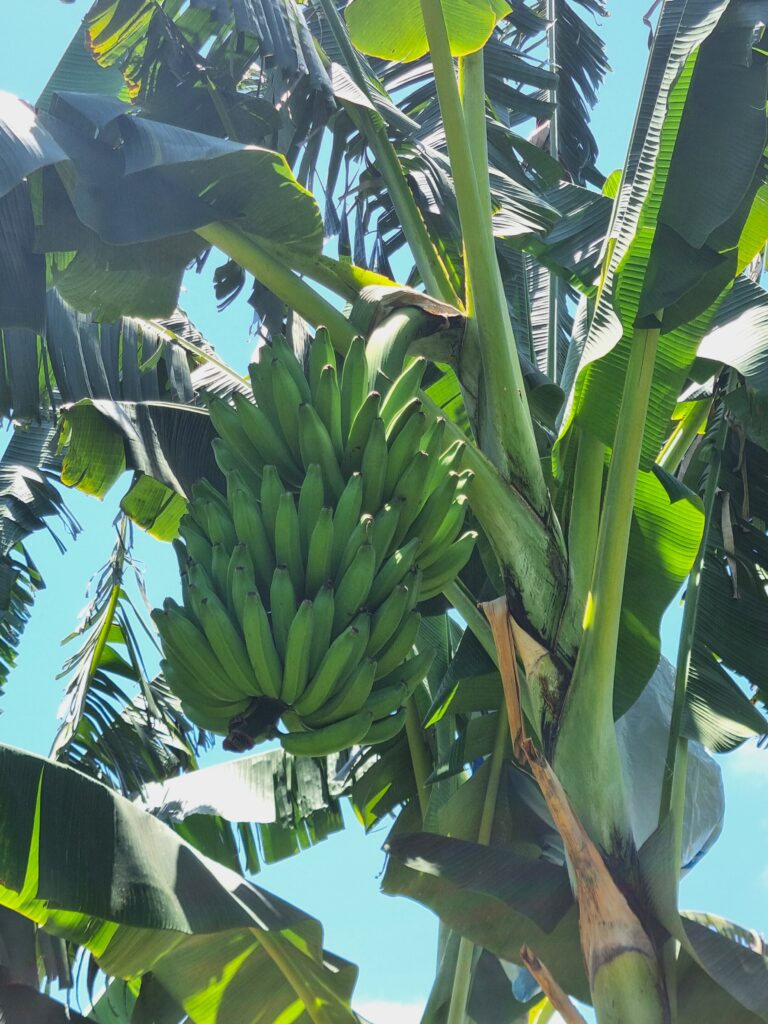Agronomic evaluation of Lady Finger-like varieties (December 2022)
Lady Finger-like varieties from Brazil under trial at South Johnstone
By Jeff Daniells, Katie Robertson, Sharan Muthukumar and Carole Wright (August 2024)
Latest update...
Several Fusarium wilt Race 1 resistant Lady Finger-like varieties are being assessed for agronomic performance at the South Johnstone Research Facility. The plant crop data and a summary of the results is available below.
The first ratoon harvest is already underway with harvest commencing in May 2024. The trial will be completed after the first ratoon harvest. Local taste panel results for varieties will be available then. Results from Panama disease Race 1 screening available next year will help guide any future on-farm studies.
Those who attended the September 2023 field walk had an opportunity to see plant crop bunches of these Lady Finger-like varieties. A video field walk through the block, prepared for the 2023 Industry Roadshows in NSW at about that time, is available.
Background
According to the ‘Australian Horticulture Statistics Handbook 2022/23’ the annual production of Lady Finger banana in that year was 11,228 t compared to 363,023 t of Cavendish, so Lady Fingers represent only about 3% of overall banana production. However, the farmgate value of Lady Finger production can be estimated as worth about $30 million, which because of the higher price paid for Lady Finger per kg of fruit, represents about 5% of the overall banana industry. But whatever way you want to look at it, the Lady Finger industry is an important industry in its own right. In New South Wales the Lady Finger industry is proportionally much more important than it is overall for Australia.
In the April 2024 edition of Australian Bananas (see here pp 26-27) we drew attention to the constraint that Fusarium wilt Race 1 has placed on Lady Finger production in Australia. Varieties with resistance have been sought and evaluated over time, but while many have been identified with resistance, none have so far measured up as replacements for the Race 1 susceptible Lady Finger in the marketplace. So where possible, affected growers have sought new ground not infested with the pathogen.
In 2019/20 some new Lady Finger selections, Lady Finger hybrids and Sugar hybrids were imported from banana breeding programs in Brazil to evaluate in Australia. As described in the April article in Australian Bananas, some of these are being screened against Race 1 on the Atherton Tablelands. Here in this article, we present results from the plant crop of their agronomic evaluation at South Johnstone. This evaluation is part of the project BA21002 – ‘New varieties for Australian banana growers’.
Trial results in plant crop
Tissue cultured plants of 3 Lady Finger selections, 4 Lady Finger hybrids and 2 Sugar (Silk) hybrids were field planted in December 2022 at South Johnstone DAF. Pacovan, SCS451 and the hybrids all came from Brazil. The 6 hybrids from the program of EMBRAPA are all reported to be resistant to both Panama disease Race 1 and yellow Sigatoka. Japira and Pacoua are also reported to be resistant to black Sigatoka. SCS451 is from the program of EPAGRI and was purported to have tolerance to Panama disease Race 1. Bunch emergence commenced in May 2023, and harvest was completed in December 2023.



Unfortunately, all except one of the Lady Finger (Improved) control plants were tissue culture offtypes. Thus, there are serious limitations when wishing to compare the new selections with the industry standard, Lady Finger. Nevertheless, reliable comparisons can be made amongst the new varieties. The agronomic and yield results from the plant crop are presented in the table below. Relative comparisons from previous studies suggest that for the Lady Finger data included in the table, the pseudostem height is indicative, but the duration from planting to harvest would usually be a little slower resulting in bunch weight/12 months being more in line with that obtained for SCS451.
Table: Selected yield and plant characteristics of varieties in the plant crop

Summary of results
A summary of the results and observations made are as follows:
-
The highest yielding varieties (per unit of time) were Pacovan, Pacovan Ken and SCS451, which were all significantly higher yielding than Tropical, Princesa and Japira.
-
The tallest variety was Japira and the shortest in stature was SCS451. Several aspects of crop management are more difficult with the taller varieties.
-
Japira, Pacovan Ken and Pacovan had significantly longer fruit on the 3rd hand, while fruit of Tropical and Princesa was significantly shorter.
Where to from here?
The first ratoon harvest is already underway with harvest commencing in May 2024. The trial will be completed after the first ratoon harvest. Local taste panel results for varieties will be available then. Results from Panama disease Race 1 screening available next year will help guide any future on-farm studies.
More information will be made available as the trial progresses.
This research has been funded as part of the project New varieties for Australian banana growers (BA21002), which is funded by Hort Innovation, using the banana industry research and development levies and contributions from the Australian Government. Hort Innovation is the grower-owned, not-for-profit research and development corporation for Australian horticulture. The Queensland Government has also co-funded the project through the Department of Agriculture and Fisheries.


